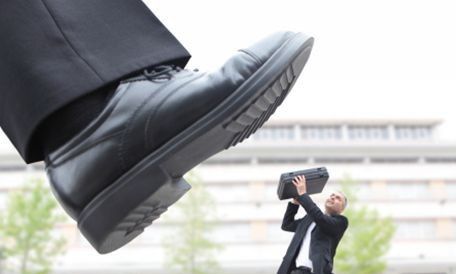船员在船上起居舱室公约(1949年修正本)(一)
|
船员在船上起居舱室公约(1949年修正本) 第92号公约 [Date of coming into force: 29 January 1953.] The General Conference of the International Labour Organization, Having been convened at Geneva by the Governing Body of theInternational Labour Office, and having met in its Thirty-second Sessionon 8 June 1949, and Having decided upon the adoption of certain proposals with regard tothe partial revision of the Accommodation of Crews Convention, 1946,adopted by the Conference at its Twenty-eighth Session, which is includedin the twelfth item on the agenda of the session, and Considering that these proposals must take the form of aninternational Convention, adopts this eighteenth day of June of the yearone thousand nine hundred and forty-nine the following Convention, whichmay be cited as the Accommodation of Crews Convention (Revised), 1949: PART I. GENERAL PROVISIONS Article 1 1. This Convention applies to every sea-going mechanically propelledvessel, whether publicly or privately owned, which is engaged in thetransport of cargo or passengers for the purpose of trade and isregistered in a territory for which this Convention is in force. 2. National laws or regulations shall determine when vessels are to beregarded as seagoing vessels for the purpose of this Convention. 3. This Convention does not apply to—— (a) vessels of less than 500 tons; (b) vessels primarily propelled by sail but having auxiliaryengines; (c) vessels engaged in fishing or in whaling or in similarpursuits; (d) tugs. 4. Provided that the Convention shall be applied where reasonable andpracticable to (a) vessels between 200 and 500 tons; and (b) the accommodation of persons engaged in usual sea-goingroutine in vessels engaged in whaling or in similar pursuits. 5. Provided also that any of the requirements contained in Part III ofthis Convention may be varied in the case of any ship if the competentauthority is satisfied, after consultation with the organizations ofshipowners and/or the shipowners and with the bona fide trade unions ofseafarers, that the variations to be made provide corresponding advantagesas a result of which the over-all conditions are not less favourable thanthose which would result from the full application of the provisions ofthe Convention; particulars of all such variations shall be communicatedby the Member to the Director-General of the International Labour Office,who shall notify the Members of the International Labour Organization. Article 2 In this Convention (a) the term “ship” means a vessel to which the Convention applies; (b) the term “tons” means gross register tons; (c) the term “passenger ship” means a ship in respect of whichthere is in force either (i) a safety certificate issued in accordancewith the provisions of the International Convention for the Safety of Lifeat Sea for the time being in force or (ii) a passenger certificate; (d) the term “officer” means a person other than a master rankedas an officer by national laws or regulations, or, in the absence of anyrelevant laws or regulations, by collective agreement or custom; (e) the term “rating” means a member of the crew other than anofficer; (f) the term “petty officer” means a rating serving in asupervisory position or position of special responsibility who is classedas petty officer by national laws or regulations, or in the absence ofany relevant laws or regulations, by collective agreement or custom; (g) the term “crew accommodation” includes such sleeping rooms,mess rooms, sanitary accommodation, hospital accommodation and recreationaccommodation as are provided for the use of the crew; (h) the term “prescribed” means prescribed by national laws orregulations or by the competent authority; (i) the term “approved” means approved by the competent authority; (j) the term “re-registered” means re-registered on the occasionof a simultaneous change in the territory of registration and ownership ofthe vessel. Article 3 1. Each Member for which this Convention is in force undertakes tomaintain in force laws or regulations which ensure the application of theprovisions of Parts II, III and IV of this Convention. 2. The laws or regulations shall—— (a) require the competent authority to bring them to the notice ofall persons concerned; (b) define the persons responsible for compliance therewith; (c) prescribe adequate penalties for any violation thereof; (d) provide for the maintenance of a system of inspection adequateto ensure effective enforcement; (e) require the competent authority to consult the organizationsof shipowners and/or the shipowners and the recognised bona fide tradeunions of seafarers in regard to the framing of regulations, and tocollaborate so far as practicable with such parties in the administrationthereof. PART II. PLANNING AND CONTROL OF CREW ACCOMMODATION Article 4 1. Before the construction of a ship is begun a plan of the ship,showing on a prescribed scale the location and general arrangement of thecrew accommodation, shall be submitted for approval to the competentauthority. 2. Before the construction of the crew accommodation is begun andbefore the crew accommodation in an existing ship is altered orreconstructed, detailed plans of, and information concerning, theaccommodation, showing on a prescribed scale and in prescribed detail theallocation of each space, the disposition of furniture and fittings, themeans and arrangement of ventilation, lighting and heating, and thesanitary arrangements, shall be submitted for approval to the competentauthority: Provided that in the case of emergency or temporary alterationsor reconstruction effected outside the territory of registration it shallbe sufficient compliance with this provision if the plans are subsequentlysubmitted for approval to the competent authority. Article 5 On every occasion when (a) a ship is registered or re-registered, (b) the crew accommodation of a ship has been substantiallyaltered or reconstructed, or (c) complaint has been made to the competent authority in theprescribed manner and in time to prevent any delay to the vessel by arecognised bona fide trade union of seafarers representing all or part ofthe crew or by a prescribed number or proportion of the members of thecrew of the ship that the crew accommodation is not in compliance with theterms of this Convention, the competent authority shall inspect the ship and satisfy itself thatthe crew accommodation complies with the requirements of the laws andregulations. PART III. CREW ACCOMMODATION REQUIREMENTS Article 6 1. The location, means of access, structure and arrangement inrelation to other spaces of crew accommodation shall be such as to ensureadequate security, protection against weather and sea, and insulation fromheat or cold, undue noise or effluvia from other spaces. 2. There shall be no direct openings into sleeping rooms from spacesfor cargo and machinery or from galleys, lamp and paint rooms or fromengine, deck and other bulk storerooms, drying rooms, communal washplaces or water closets. That part of the bulkhead separating such placesfrom sleeping rooms and external bulkheads shall be efficientlyconstructed of steel or other approved substance and shall be watertightand gastight. 3. External bulkheads of sleeping rooms and mess rooms shall beadequately insulated. All machinery casings and all boundary bulkheads ofgalleys and other spaces in which heat is produced shall be adequatelyinsulated where there is a possibility of resulting heat effects inadjoining accommodation or passageways. Care shall also be taken toprovide protection from heat effects of steam and/or hot-water servicepipes. 4. Internal bulkheads shall be of approved material which is notlikely to harbour vermin. 5. Sleeping rooms, mess rooms, recreation rooms and alley-ways in thecrew accommodation space shall be adequately insulated to preventcondensation or overheating. 6. Main steam and exhaust pipes for winches and similar gear shall notpass through crew accommodation nor, whenever technically possible,through alley-ways leading to crew accommodation; where they do passthrough such alley-ways they shall be adequately insulated and encased. 7. Inside panelling or sheeting shall be of material with a surfaceeasily kept clean. Tongued and grooved boarding or any other form ofconstruction likely to harbour vermin shall not be used. 8. The competent authority shall decide to what extent fire-preventionor fire-retarding measures shall be required to be taken in theconstruction of the accommodation. 9. The wall surface and deckhead in sleeping rooms and mess roomsshall be capable of being easily kept clean and, if painted, shall belight in colour; lime wash must not be used. 10. The wall surfaces shall be renewed or restored as necessary. 11. The decks in all crew accommodation shall be of approved materialand construction and shall provide a surface impervious to damp and easilykept clean. 12. Where the floorings are of composition the joining with sidesshall be rounded to avoid crevices. 13. Sufficient drainage shall be provided. Article 7 1. Sleeping rooms and mess rooms shall be adequately ventilated. 2. The system of ventilation shall be controlled so as to maintain theair in a satisfactory condition and to ensure a sufficiency of airmovement in all conditions of weather and climate. 3. Ships regularly engaged on voyages in the tropics and the PersianGulf shall be equipped with both mechanical means of ventilation andelectric fans: Provided that one only of these means need be adopted inspaces where this ensures satisfactory ventilation. 4. Ships engaged outside the tropics shall be equipped with eithermechanical means of ventilation or electric fans. The competent authoritymay exempt ships normally employed in the cold waters of the northern orsouthern hemispheres from this requirement. 5. Power for the operation of the aids to ventilation required byparagraphs 3 and 4 shall, when practicable, be available at all times whenthe crew is living or working on board and conditions so require. Article 8 1. An adequate system of heating the crew accommodation shall beprovided except in ships engaged exclusively in voyages in the tropics andthe Persian Gulf. 2. The heating system shall, when practicable, be in operation at alltimes when the crew is living or working on board and conditions requireits use. 3. In all ships in which a heating system is required, the heatingshall be by means of steam, hot water, warm air or electricity. 4. In any ships in which heating is provided by a stove, measuresshall be taken to ensure that the stove is of sufficient size and isproperly installed and guarded and that the air is not fouled. 5. The heating system shall be capable of maintaining the temperaturein crew accommodation at a satisfactory level under normal conditions ofweather and climate likely to be met with on service; the competentauthority shall prescribe the standard to be provided. 6. Radiators and other heating apparatus shall be so placed and, wherenecessary, shielded as to avoid risk of fire or danger or discomfort tothe occupants. Article 9 1. Subject to such special arrangements as may be permitted inpassenger ships, sleeping rooms and mess rooms shall be properly lightedby natural light and shall be provided with adequate artificial light. 2. All crew spaces shall be adequately lighted. The minimum standardfor natural lighting in living rooms shall be such as to permit a personwith a normal vision to read on a clear day an ordinary newspaper in anypart of the space available for free movement. When it is not possible toprovide adequate natural lighting, artificial lighting of the aboveminimum standard shall be provided. 3. In all ships electric lights shall be provided in the crewaccommodation. If there are not two independent sources of electricity forlighting, additional lighting shall be provided by properly constructedlamps or lighting apparatus for emergency use. 4. Artificial lighting shall be so disposed as to give the maximumbenefit to the occupants of the room. 5. In sleeping rooms an electric reading lamp shall be installed atthe head of each berth. Article 10 1. Sleeping rooms shall be situated above the load line amidships oraft. 2. In exceptional cases the competent authority may, if the size, typeor intended service of the ship render any other location unreasonable orimpracticable, permit the location of sleeping rooms in the fore part ofthe ship, but in no case forward of the collision bulkhead. 3. In passenger ships the competent authority may, on condition thatsatisfactory arrangements are made for lighting ventilation, permit thelocation of sleeping rooms below the load line, but in no case immediatelybeneath working alley-ways. 4. The floor area per person of sleeping rooms intended for ratingsshall be not less than (a) 20 sq. ft. or 1.85 sq. m. in vessels under 800 tons; (b) 25 sq. ft. or 2.35 sq. m. in vessels of 800 tons or over, butunder 3 000 tons; (c) 30 sq. ft. or 2.78 sq. m. in vessels of 3 000 tons or over:Provided that, in the case of passenger ships in which more than fourratings are berthed in one room, the minimum per person may be 24 sq. ft.(2.22 sq. m.)。 5. In the case of ships in which are employed such groups of ratingsas necessitate the employment of a substantially larger number of ratingsthan would otherwise be employed, the competent authority may, in respectof such groups, reduce the minimum floor area of sleeping rooms perperson, subject to the conditions that (a) the total sleeping space allotted to the group or groups is notless than would have been allotted had the numbers not been so increased,and (b) the minimum floor area of sleeping rooms is not less than (i) 18 sq. ft. (1.67 sq. m.) per person in ships under 3 000tons; (ii) 20 sq. ft. (1.85 sq. m.) per person in ships of 3 000tons or over. 6. Space occupied by berths and lockers, chests of drawers and seatsshall be included in the measurement of the floor area. Small orirregularly shaped spaces which do not add effectively to the spaceavailable for free movement and cannot be used for installing furnitureshall be excluded. 7. The clear head room in crew sleeping rooms shall not be less than 6ft. 3 ins. (190 cm.)。 8. There shall be a sufficient number of sleeping rooms to provide aseparate room or rooms for each department: Provided that the competentauthority may relax this requirement in the case of small ships. 9. The number of persons allowed to occupy sleeping rooms shall notexceed the following maxima: (a) officers in charge of a department, navigating and engineerofficers in charge of a watch and senior radio officers or operators: oneperson per room; (b) other officers: one person per room wherever possible, and inno case more than two; (c) petty officers: one or two persons per room, and in no casemore than two; (d) other ratings: two or three persons per room whereverpossible, and in no case more than four. 10. With a view to ensuring adequate and more comfortableaccommodation the competent authority may, after consultation with theorganizations of shipowners and/or the shipowners and the bona fide tradeunions of seafarers, grant permission to accommodate up to ten ratings persleeping room in the case of certain passenger ships. 11. The maximum number of persons to be accommodated in any sleepingroom shall be indelibly and legibly marked in some place in the room whereit can conveniently be seen. 12. Members of the crew shall be provided with individual berths. 13. Berths shall not be placed side by side in such a way that accessto one berth can be obtained only over another. 14. Berths shall not be arranged in tiers of more than two; in thecase of berths placed along the ship's side, there shall be only a singletier where a sidelight is situated above a berth. 15. The lower berth in a double tier shall be not less than 12 ins.(30 cm.) above the floor; the upper berth shall be placed approximatelymidway between the bottom of the lower berth and the lower side of thedeckhead beams. 16. The minimum inside dimensions of a berth shall be 6 ft. 3 ins. by2 ft. 3 ins. (190 cm. by 68 cm.)。 17. The framework and the lee-board, if any, of a berth shall be ofapproved material, hard, smooth, and not likely to corrode or to harbourvermin. 18. If tubular frames are used for the construction of berths, theyshall be completely sealed and without perforations which would giveaccess to vermin. 19. Each berth shall be fitted with a spring bottom or a springmattress and with a mattress of approved material. Stuffing of straw orother material likely to harbour vermin shall not be used. 20. When one berth is placed over another a dust-proof bottom of wood,canvas or other suitable material shall be fitted beneath the springbottom of the upper berth. 21. Sleeping rooms shall be so planned and equipped as to ensurereasonable comfort for the occupants and to facilitate tidiness. 22. The furniture shall include a clothes locker for each occupant.The clothes lockers shall be not less than 5 ft. (152 cm.) in height andof a cross-section area of 300 sq. ins. (19. 30 sq. decimetres) and shallbe fitted with a shelf and a hasp for a padlock. The padlock shall beprovided by the occupant. 23. Each sleeping room shall be provided with a table or desk, whichmay be of the fixed, drop-leaf or slide-out type, and with comfortableseating accommodation as necessary. 24. The furniture shall be of smooth, hard material not liable to warpor corrode. 25. The drawer or equivalent space for each occupant shall be not lessthan 2 cu. ft. (。056 cu. m.)。 26. Sleeping rooms shall be fitted with curtains for the sidelights. 27. Sleeping rooms shall be fitted with a mirror, small cabinets fortoilet requisites, a book rack and a sufficient number of coat hooks. 28. As far as practicable berthing of crew members shall be soarranged that watches are separated and that no daymen share a room withwatch-keepers |








